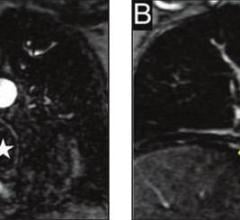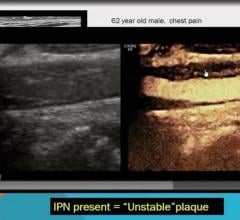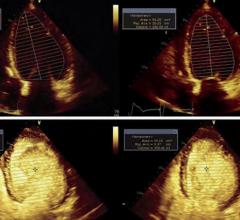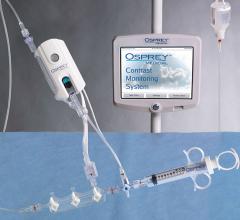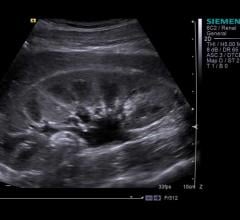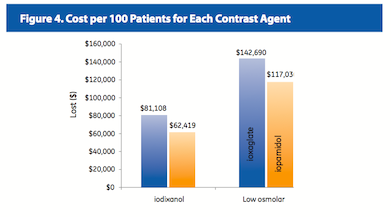
Cost per 100 patients for each contrast agent.
May 24, 2010 - Utilizing the iso-osmolar agent Visipaque (iodixanol) could save hospitals $54,617 per 100 patients when compared to the low osmolar nonionic agent iopamidol. This was according to results from a study presented at the American Heart Association’s Quality of Care and Outcomes Research in Cardiovascular Disease and Stroke Scientific Sessions in Washington, D.C., held May 19-21.
James Spalding, M.D., conveyed findings on a study designed to assess the resource utilization and cost of major adversce cardiac events (MACE) during cardiac catheterizations (CC) or percutaneous coronary interventions (PCI) among high- and low-risk patients.
The observational, retrospective, cohort study, "Resource Utilization and Economic Impact of Major Adverse Cardiac Events (MACE) in Individuals Undergoing Invasive Cardiac Catheterization Procedures (CCP) with Low or Iso-Osmolar Contrast Agents," used data available from Jan. 1, 2007 through Dec. 31, 2008 from 600 U.S. acute care hospitals.
Researchers observed patients older than age 18, undergoing CC or PCI in the outpatient hospital setting and who received a contrast agent (iohexol, iodixanol, ioversol, iopamidol, or ioxaglate) on the same day as the procedure were included in the analysis. Patients received more than one contrast agent on the day of the procedure were excluded. High-risk patients were defined as having acute myocardial infarction (AMI) or angina at initial admission.
They assessed the following outcome measures among high- and low-risk patients:
- The presence of MACE based on a primary diagnosis ICD-9 code for AMI (410.xx), other forms of ischemic heart disease (411.xx, 414.xx), or angina (413.xx) within 30 days of initial CC/PCI.
- The length of stay (LOS) of initial visit.
- Costs that were calculated from the hospital perspective.
The found the following outcomes:
- Among the 521,437 patients undergoing a CC/PCI, 2.5 percent (n=13,149) experienced a MACE; high-risk patients had a higher rate of MACE compared to low-risk patients (4.1 vs. 2.1 percent, P
- For those experiencing MACE, high-risk patients had longer overall LOS (4.2 vs. 3.3 days, P
- For MACE patients, those who were at high risk had greater total costs during the initial visit and 30 days post-visit.
After applying literature-based rates, the researchers concluded the iso-osmolar agent Visipaque (iodixanol) could save hospitals $54,617 per 100 patients when compared to the low osmolar nonionic agent iopamidol. Similarly, utilization of the iso-osmolar agent Visipaque (iodixanol) in high-risk patients may save up to $61,582 per 100 patients when compared to the low osmolar ionic agent ioxaglate.
Furthermore, the study concluded:
- MACE is a complication in CC and PCI with substantial resource utilization and costs.
- The iso-osmolar contrast agent Visipaque (iodixanol) may reduce the rate of MACE versus iopamidol and versus ioxaglate in high-risk patients.
- The cost difference for resource utilization associated with CC and PCI shown by this analysis for iodixanol vs. ioxaglate is approximately $61,000 and for iodixanol versus iopamidol is approximately $55,000.
For more information: www.gehealthcare.com


 August 17, 2023
August 17, 2023 
